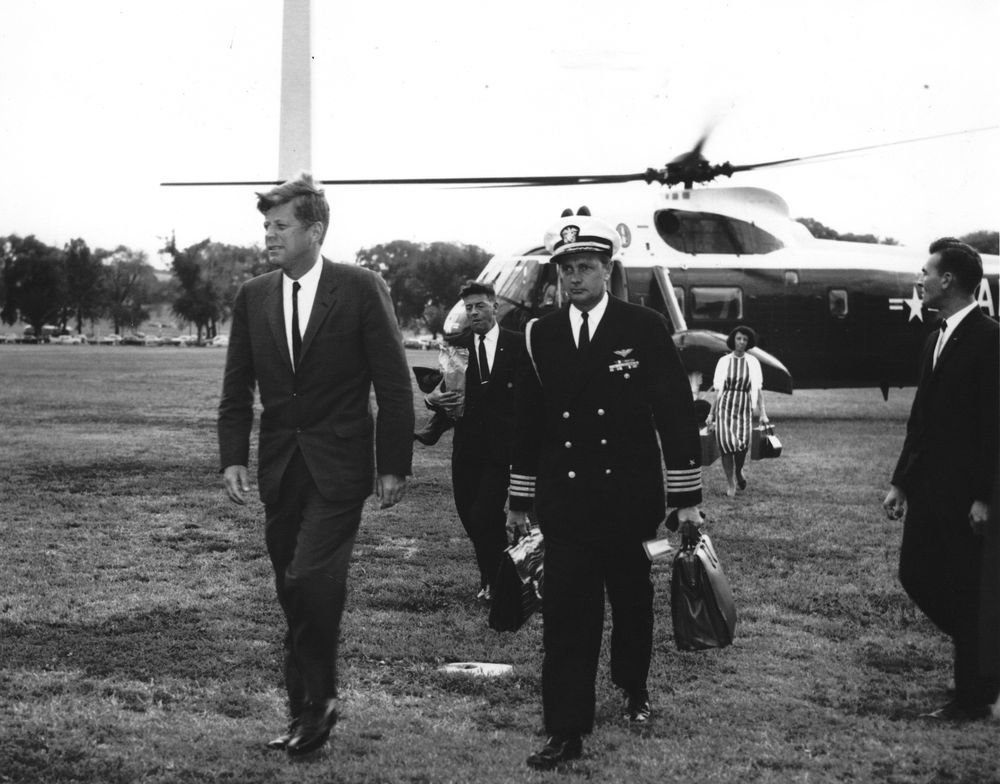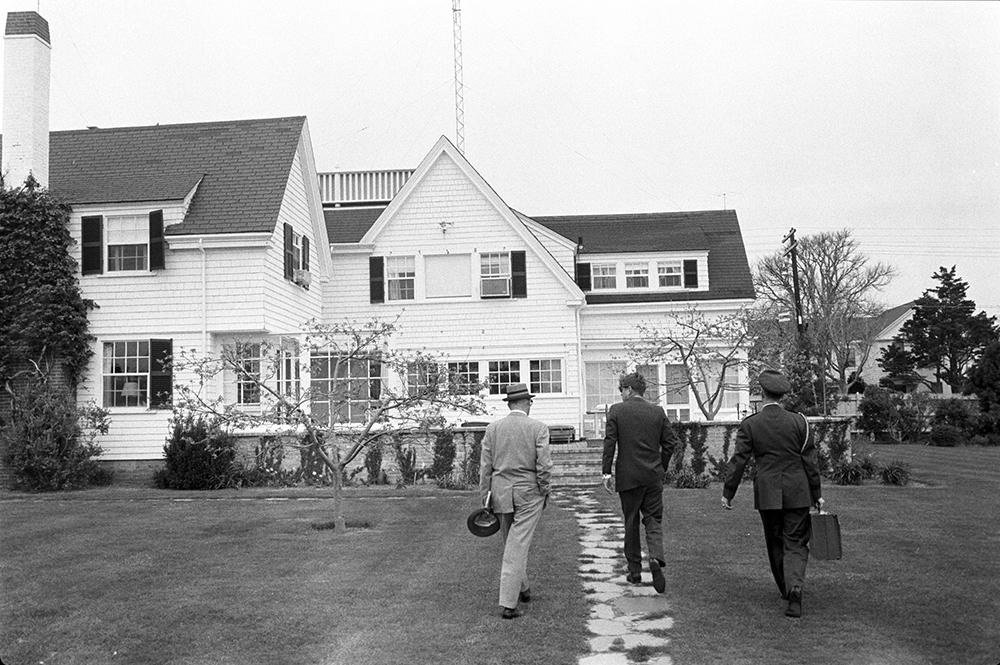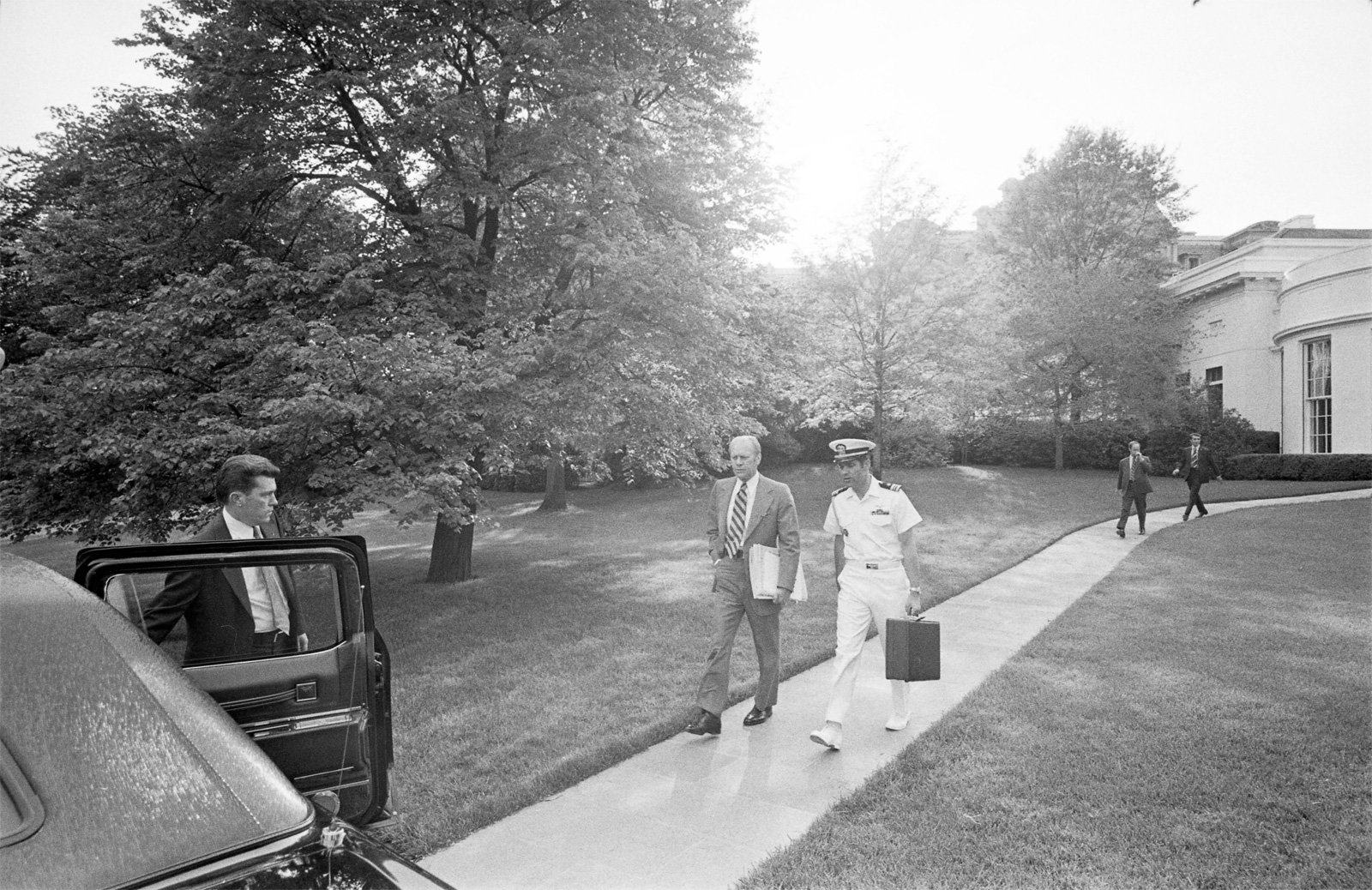The Fascinating History Behind the US President’s Nuclear Football

President John F. Kennedy returns to the White House in 1962. Courtesy of Abbie Rowe, John F. Kennedy Presidential Library and Museum.
The “nuclear football” is guarded by a senior military aide-de-camp and kept in close proximity to the US president whenever he is away from the White House. Following World War II, nuclear weapons were a new reality of the world’s superpowers, and when the US and Soviet Union squared off in the Cold War these superweapons were strategic methods for deterrence. After the Cuban Missile Crisis in 1962, President John F. Kennedy questioned whether there was a need for a doomsday weapon capability that could allow its operator to order a nuclear strike from anywhere in the world.
“What would I say to the Joint War Room to launch an immediate nuclear strike?” he asked, according to declassified reports. “How would the person who received my instructions verify them?”
The solution was a 45-pound aluminum-framed black leather briefcase, officially called the Presidential Emergency Satchel. It became more commonly known as the nuclear football because the nuclear plan was code-named Operation Dropkick — it needed a “football” to complete the sequence. The most common misconception about the nuclear football is that the president flips a switch or hits a big red button and the world ends moments later. If that were the case, the world should be very concerned. Fortunately, it verifies the identity of the president and connects him to the Pentagon, which is responsible for carrying out the military strike.

In 1980, Bill Gulley, the former director of the White House Military Office, wrote a tell-all book, Breaking Cover, describing the shady money deals under four different administrations — those of Lyndon B. Johnson, Richard Nixon, Gerald Ford, and Jimmy Carter. The Washington Post gave Gulley, who even disclosed the different components of the nuclear football, the unflattering title of the “mercenary snitch.”
“There are four things in the Football,” Gulley writes. “The Black Book containing the retaliatory options, a book listing classified site locations, a manila folder with eight or ten pages stapled together giving a description of procedures for the Emergency Broadcast System, and a three-by-five inch card with authentication codes [which the president usually carries separately from the football].”
Carter later found these retaliatory options super complicated, so he started the process of simplifying the nuclear codes, or “the biscuit.” Air Force Col. Robert “Buzz” Patterson, a senior military aide-de-camp responsible for President Bill Clinton’s nuclear football, explained the refined codes were similar to a “Denny’s breakfast menu” because “it’s like picking one out of Column A and two out of Column B.” On the day when the Clinton and Monica Lewinsky scandal hit the national press, the president forgot where he had put the nuclear football.
“I was floored — and so was the Pentagon,” Patterson recalled. “It had never happened before.”

Although Clinton once lost the nuclear football and then left it behind at a NATO meeting on another occasion, he wasn’t the only president guilty of misplacing the highly sensitive and secret world-ending capability. Carter lost the biscuit when he left the card in his suit and it was sent to the dry cleaners. When President Ronald Reagan was shot in an assassination attempt in 1981, his biscuit was thrown away in a trash can in the George Washington University Hospital.
The most recent ordeal involving the nuclear football came in 2017 when President Donald Trump visited China. A scuffle between Chinese security officials and the US Secret Service ensued after the nuclear football wasn’t allowed inside Beijing’s Great Hall of the People.
“Then there was a commotion,” Axios reported in 2018. “A Chinese security official grabbed [Chief of Staff John] Kelly, and Kelly shoved the man’s hand off of his body. Then a U.S. Secret Service agent grabbed the Chinese security official and tackled him to the ground.”
Since the nuclear football was first photographed on May 10, 1963, it has become the focus of the media, a concern for foreign governments, and a token of strength and military might for the US government. It was even replicated by the Soviet Union, which created its own version called the Cheget.

Matt Fratus is a history staff writer for Coffee or Die. He prides himself on uncovering the most fascinating tales of history by sharing them through any means of engaging storytelling. He writes for his micro-blog @LateNightHistory on Instagram, where he shares the story behind the image. He is also the host of the Late Night History podcast. When not writing about history, Matt enjoys volunteering for One More Wave and rooting for Boston sports teams.
BRCC and Bad Moon Print Press team up for an exclusive, limited-edition T-shirt design!
BRCC partners with Team Room Design for an exclusive T-shirt release!
Thirty Seconds Out has partnered with BRCC for an exclusive shirt design invoking the God of Winter.
Lucas O'Hara of Grizzly Forge has teamed up with BRCC for a badass, exclusive Shirt Club T-shirt design featuring his most popular knife and tiomahawk.
Coffee or Die sits down with one of the graphic designers behind Black Rifle Coffee's signature look and vibe.
Biden will award the Medal of Honor to a Vietnam War Army helicopter pilot who risked his life to save a reconnaissance team from almost certain death.
Ever wonder how much Jack Mandaville would f*ck sh*t up if he went back in time? The American Revolution didn't even see him coming.
A nearly 200-year-old West Point time capsule that at first appeared to yield little more than dust contains hidden treasure, the US Military Academy said.












